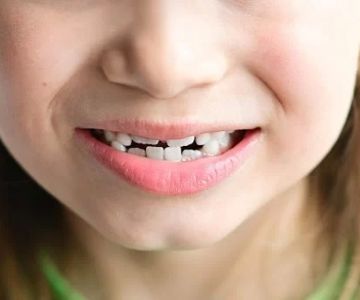
How to Maintain Oral Hygiene with Dental Bridges Effectively
- Understanding Dental Bridges
- Why Oral Hygiene Is Crucial with Dental Bridges
- Steps to Maintain Oral Hygiene with Dental Bridges
- Tools to Use for Effective Oral Care
- Common Mistakes to Avoid with Dental Bridges
- When to See a Dentist for Your Dental Bridge
- Buying Oral Care Products for Dental Bridges
Dental bridges are a great solution for replacing missing teeth, providing both aesthetic and functional benefits. However, maintaining oral hygiene with dental bridges is crucial for ensuring the longevity of the restoration and preventing potential complications such as gum disease or tooth decay. In this article, we will explore essential tips for maintaining your oral health with dental bridges, common mistakes to avoid, and the tools you need for effective oral care.
1. Understanding Dental Bridges
A dental bridge is a prosthetic device used to replace one or more missing teeth. It consists of a false tooth (pontic) that is held in place by dental crowns on either side, which are typically attached to the natural teeth or dental implants. Bridges restore functionality, improve speech, and enhance the appearance of your smile.
1.1 Types of Dental Bridges
There are different types of dental bridges, including traditional, cantilever, Maryland, and implant-supported bridges. The choice of bridge depends on the location of the missing teeth, the condition of surrounding teeth, and the patient’s overall oral health.
1.2 How Dental Bridges Work
The crowns on each side of the bridge are bonded to the abutment teeth, while the pontic fills the gap created by the missing tooth. This structure allows the patient to chew properly, restore their bite, and maintain the shape of their face. However, because the bridge involves surrounding teeth, proper care is essential to ensure these teeth and the gums remain healthy.
2. Why Oral Hygiene Is Crucial with Dental Bridges
Proper oral hygiene with dental bridges is critical because neglecting it can lead to issues such as gum disease, tooth decay around the abutment teeth, and potential failure of the bridge. Plaque can accumulate around the bridge and in the spaces between your teeth, leading to infection and complications that may require the bridge to be replaced.
2.1 Risks of Poor Oral Hygiene
If plaque is allowed to build up around the bridge, it can cause inflammation of the gums, also known as gingivitis. In more severe cases, the infection can progress into periodontal disease, which can affect the abutment teeth that hold the bridge in place. This could ultimately lead to the failure of the dental bridge and the need for replacement or more invasive dental procedures.
2.2 Preventing Problems with Proper Care
By adopting a good oral hygiene routine, you can prevent the buildup of plaque and bacteria around the dental bridge. This will not only prolong the life of the bridge but also keep your mouth healthy and comfortable.
3. Steps to Maintain Oral Hygiene with Dental Bridges
Maintaining oral hygiene with dental bridges requires a few extra steps to ensure that both the bridge and surrounding teeth remain healthy. Here’s a step-by-step guide:
3.1 Brush Your Teeth Twice a Day
Use a soft-bristled toothbrush and fluoride toothpaste to brush your teeth, including the area around the dental bridge. Brush for at least two minutes to remove plaque and food particles. Make sure to gently brush along the gumline and around the abutment teeth, as these are areas where plaque tends to build up.
3.2 Use Dental Floss or an Interdental Brush
Regular flossing is vital for cleaning between the teeth and under the dental bridge. You can use traditional dental floss or specialized floss threaders to navigate the space under the pontic. Alternatively, interdental brushes can help clean between the teeth and under the bridge effectively, especially if you have wider gaps between your teeth.
3.3 Consider Using a Water Flosser
A water flosser is an excellent tool for removing debris and plaque from between the teeth and around the dental bridge. The gentle stream of water can reach areas that brushing and flossing might miss, helping to ensure thorough cleaning.
3.4 Rinse with Mouthwash
After brushing and flossing, rinse your mouth with an antibacterial mouthwash to kill bacteria and help prevent gum disease. Mouthwash can reach areas that may be missed during brushing and flossing, giving an added layer of protection to your oral health.
4. Tools to Use for Effective Oral Care
Having the right tools is essential for maintaining oral hygiene with dental bridges. Here are some of the best tools you can use:
4.1 Floss Threaders
Floss threaders allow you to easily guide dental floss under the bridge, making it easier to clean hard-to-reach areas. These small devices are designed to help you floss effectively, even if you have a tight fit around your bridge.
4.2 Interdental Brushes
Interdental brushes are small brushes designed to fit between your teeth and under dental bridges. They come in different sizes to fit various gaps, allowing for effective cleaning around the bridge.
4.3 Soft-Bristled Toothbrush
A soft-bristled toothbrush helps to clean both the bridge and surrounding teeth gently. Look for a toothbrush with an angled head that can help you reach tricky areas.
5. Common Mistakes to Avoid with Dental Bridges
While maintaining oral hygiene with dental bridges is straightforward, there are some common mistakes that can compromise the health of your bridge and teeth:
5.1 Ignoring the Gums Around the Bridge
It’s important to pay attention to the gums around your dental bridge. Neglecting them can lead to gum recession, which may affect the stability of the bridge. Be sure to brush and floss along the gumline to prevent irritation and infection.
5.2 Using Harsh Brushing Techniques
Brushing too aggressively can damage both your dental bridge and your natural teeth. Use gentle, circular motions when brushing to avoid damaging the bridge and to ensure the health of your gums and teeth.
6. When to See a Dentist for Your Dental Bridge
If you notice any discomfort, loosening of the bridge, or signs of infection, it’s essential to see your dentist as soon as possible. Regular check-ups will help ensure that your bridge is secure, and any potential issues are addressed before they become more serious problems.
7. Buying Oral Care Products for Dental Bridges
To maintain your dental bridge, it’s crucial to use the right oral care products. At Family Dentistry Online, we offer a range of dental care products specifically designed for patients with dental bridges. From floss threaders to specialized mouthwashes, our products will help you keep your smile healthy and your bridge in excellent condition.
Visit Family Dentistry Online today to find the best dental care products for your needs and ensure the long-lasting success of your dental bridge!







 Fircrest Children's Dentistry4.0 (28 review)
Fircrest Children's Dentistry4.0 (28 review) Great Expressions Dental Centers - Maple Canyon4.0 (261 review)
Great Expressions Dental Centers - Maple Canyon4.0 (261 review) Smile Shop Newtown5.0 (298 review)
Smile Shop Newtown5.0 (298 review) Dr. Hecklin: Family & Cosmetic Dentistry5.0 (316 review)
Dr. Hecklin: Family & Cosmetic Dentistry5.0 (316 review) Dentistry by Dr. David - Holistic and Zirconia Implant Dentist4.0 (313 review)
Dentistry by Dr. David - Holistic and Zirconia Implant Dentist4.0 (313 review) Brident Dental & Orthodontics3.0 (509 review)
Brident Dental & Orthodontics3.0 (509 review) The Importance of Oral Health Education During Pregnancy for a Healthy Pregnancy
The Importance of Oral Health Education During Pregnancy for a Healthy Pregnancy Best Tips for Brushing Your Teeth Properly for Healthy Gums: Essential Techniques for Oral Health
Best Tips for Brushing Your Teeth Properly for Healthy Gums: Essential Techniques for Oral Health Why Skipping Dental Checkups Can Lead to Bigger Oral Health Problems
Why Skipping Dental Checkups Can Lead to Bigger Oral Health Problems Advantages of Porcelain Dental Restorations
Advantages of Porcelain Dental Restorations How Can Diabetes Cause Tooth and Gum Problems? Preventing and Managing Oral Health Issues
How Can Diabetes Cause Tooth and Gum Problems? Preventing and Managing Oral Health Issues Healthy Habits for Promoting Good Oral Health and Hygiene: Tips for a Healthy Smile
Healthy Habits for Promoting Good Oral Health and Hygiene: Tips for a Healthy Smile